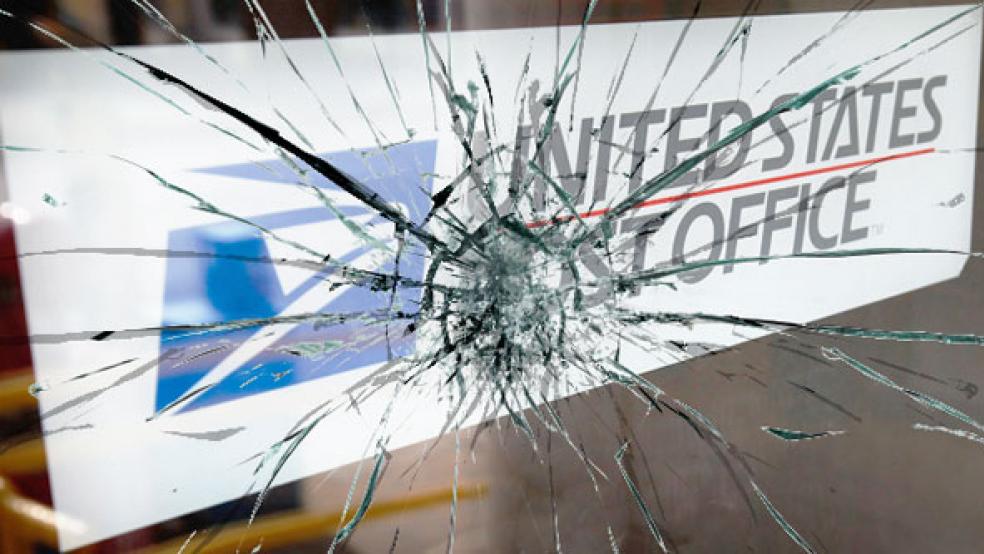President Trump issued an unexpected executive order Thursday night creating a federal task force to investigate the U.S. Postal Service’s finances, including its pricing and workforce costs.
“The USPS is on an unsustainable financial path and must be restructured to prevent a taxpayer-funded bailout,” the executive order reads.
The Postal Service on Friday said it welcomed the task force and that changes to the legal requirements under which it operates are needed: “As we have repeatedly stressed, these business model problems are serious, but solvable, and the President’s executive order … provides an opportunity to further consider these important public policy issues.”
The new task force will be led by Treasury Secretary Steven Mnuchin or his designee, with help from the directors of the Office of Management and Budget and Office of Personnel Management. The group will be required to issue a report outlining proposed reforms within 120 days.
Here's what else you need to know:
Yes, the Postal Service is losing billions: As the executive order points out, the Postal Service has lost more than $65 billion since 2007. It reported a net loss of $2.7 billion last year, its eleventh straight year of net losses.
But it does not get direct taxpayer support: The USPS is a government agency, but it is run as an independent business, meaning that your tax dollars don’t directly fund it. “The Postal Service receives NO tax dollars for operating expenses and relies on the sale of postage, products and services to fund its operations,” the USPS website says. Postal rates are overseen by an independent commission.
The executive order is about Amazon.com: Though the executive order does not mention Amazon by name, it was widely interpreted as an escalation of Trump’s long-running criticisms of the online retail giant, which the president has accused of bilking the postal service by not paying appropriate postage rates for package delivery. The USPS says that it is legally prohibited from charging Amazon and other shippers less than its delivery service costs, and that regulators have repeatedly examined and approved the Amazon deal.
But Amazon is probably helping, not killing, the USPS: A Citigroup analysis last year reportedly said that Postal Service prices would have to be increased by $1.46 per package in 2017, $1.41 in 2018 and $1.31 in 2019 to reflect the true costs of delivery and close its revenue shortfall. But most analysts say that the massive number of packages shipped by Amazon is helping USPS finances as the volume of first-class letter delivery and other types of mail continues to decline. And the Citigroup analyst who wrote the original report clarified recently that Amazon's business could indeed be profitable for the USPS. Amazon likely gets a volume discount on its packages, but the Postal Service isn’t losing money from the deal. However, the task force might suggest that USPS charge Amazon and other companies more for parcel delivery.
At the same time, the Postal Service’s package delivery business is growing: The post office’s fiscal report for 2017 shows that packages and shipping brought in $19.5 billion in revenue, or 28 percent of the total for the year. Revenue from packages grew by more than $2 billion from the prior year, by far the most of any service category. "Although we continue to win customers and grow our package business, these gains are not sufficient to offset continuing declines in our mail business, which is our main source of revenue and contribution,” Postmaster General and CEO Megan Brennan said in February.
Trump’s ire may really be about Jeff Bezos and The Washington Post: “White House insiders describe the Amazon-U.S.P.S blowup as a thinly veiled attempt to retaliate against The Washington Post, which Bezos owns, for its frequently critical coverage of his administration,” Vanity Fair’s Maya Kosoff writes.
The executive order might open to door to more privatization: “Some parts of the order appear to hint at further privatization of the Postal Service, indicating that members of the task force should examine ‘the U.S.P.S. role in the U.S. economy and in rural areas, communities, and small towns,’” writes Michael D. Shear in The New York Times.
The Postal Service does have another big financial problem, though: In 2006, Congress mandated that the postal service prefund future health benefits for its retirees at a cost of about $5.6 billion a year over 10 years, a requirement that other federal agencies and private businesses do not face. “The prefunding requirement began as an effort to ensure Postal Service liabilities would not become a taxpayer burden if the Postal Service were to someday cease to exist,” a 2015 report by the Postal Service’s Office of Inspector General explained. The USPS has made some of those payments, exhausting its $15 billion statutory debt limit in the process. It defaulted on other prefunding payments, and its prefunding obligations still totaled $38 billion as of the end of the last fiscal year. “If that doesn't meet the definition of insanity, I don't know what does,” Bloomberg’s Barry Ritholtz wrote recently. “Without this obligation, the Post Office actually turns a profit.”





